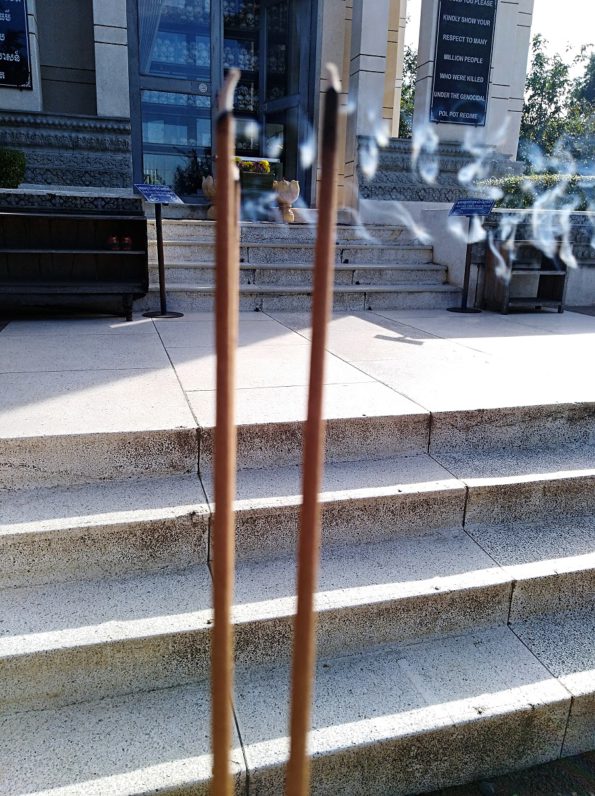 My trip to the Choeung Ek Genocidal Center in Phnom Phen actually started in 1984. I was a new copy writer working at Leo Burnett wearing flannel and jeans for a creative director draped in hand dyed Indonesian fabric, chunky African beads with a haze of Opium perfume hovering over her desk. She had just seen The Killing Fields. “You got to see it, Ginger,” pointing her Chanel red nail out the window to the Magnificent Mile. “It’s playing at the Artist Cafe.”
My trip to the Choeung Ek Genocidal Center in Phnom Phen actually started in 1984. I was a new copy writer working at Leo Burnett wearing flannel and jeans for a creative director draped in hand dyed Indonesian fabric, chunky African beads with a haze of Opium perfume hovering over her desk. She had just seen The Killing Fields. “You got to see it, Ginger,” pointing her Chanel red nail out the window to the Magnificent Mile. “It’s playing at the Artist Cafe.”
I went to see the movie, not fully comprehending what I was watching, as I didn’t comprehend many things when I was 23, like the obscene amount of money my boss made, how big Chicago was, how big the world was, or how evil people can be. All I knew was I had a paid break from writing coupon ads for Eggo Waffles that afternoon.
Fast forward thirty some years. My boss is a retired gazillionaire. I’m in Cambodia looking for a Starbucks. Eggo Waffles haven’t changed.The Fine Arts Theatre is gone. I make it to the Choeung Ek Genocidal Center better known as the Killing Fields, not for me, but for the thousands of faces that haunt me, that have become a UNESCO “heritage of the world” site. That means it’s protected by the United Nations, so in case we finally succeed at destroying ourselves, visiting aliens will know what happened.
The Killing Fields were as mismatched as my country flannel shirt was to my creative director’s exotic tastes. A blend of atrocities and natural beauty, the memorial covered with innocent trees that witnessed it all…that took part of it all.
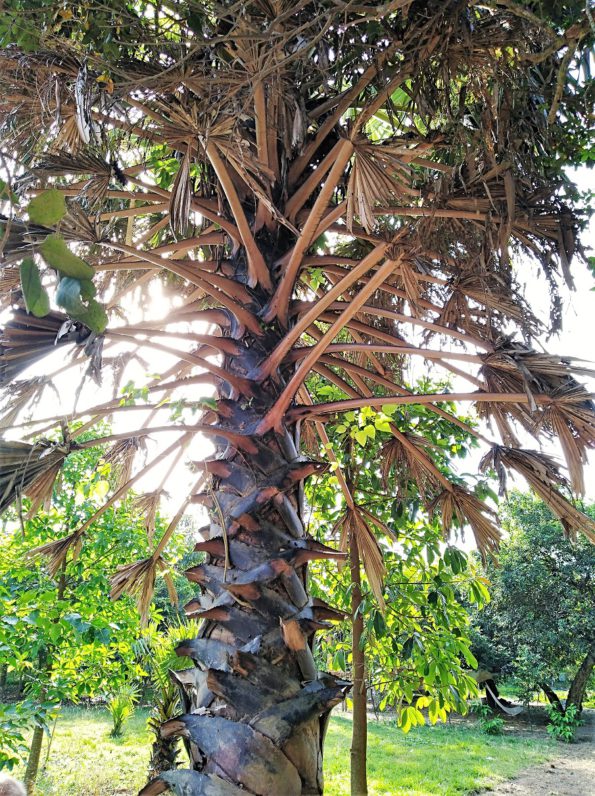 While many had gnarly roots and unusual fronds, each is a weeping willow in its own way. Some trees were used unspeakable things, like the magic tree, below. A loud speaker blasting music was hung from its branches to drown out screams.
While many had gnarly roots and unusual fronds, each is a weeping willow in its own way. Some trees were used unspeakable things, like the magic tree, below. A loud speaker blasting music was hung from its branches to drown out screams.
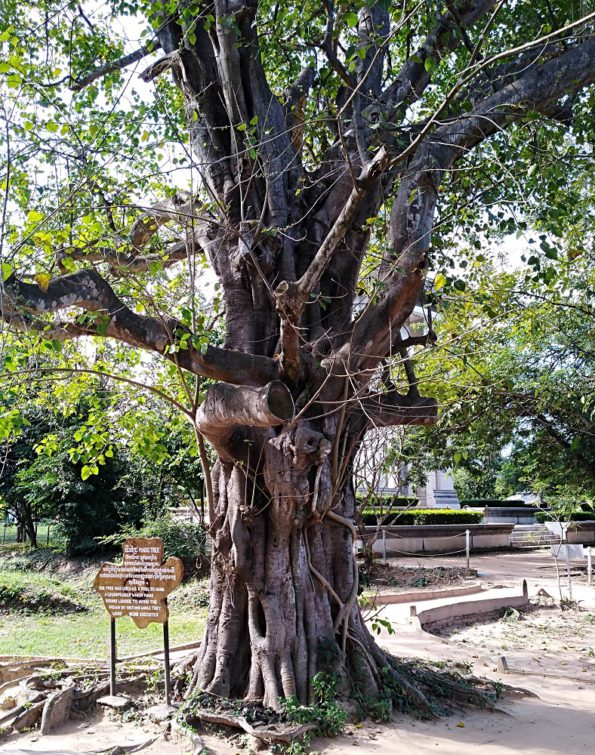 Or this tree with spiked leaves. Since bullets were too expensive, the razor sharp blades were used for beheading.
Or this tree with spiked leaves. Since bullets were too expensive, the razor sharp blades were used for beheading.
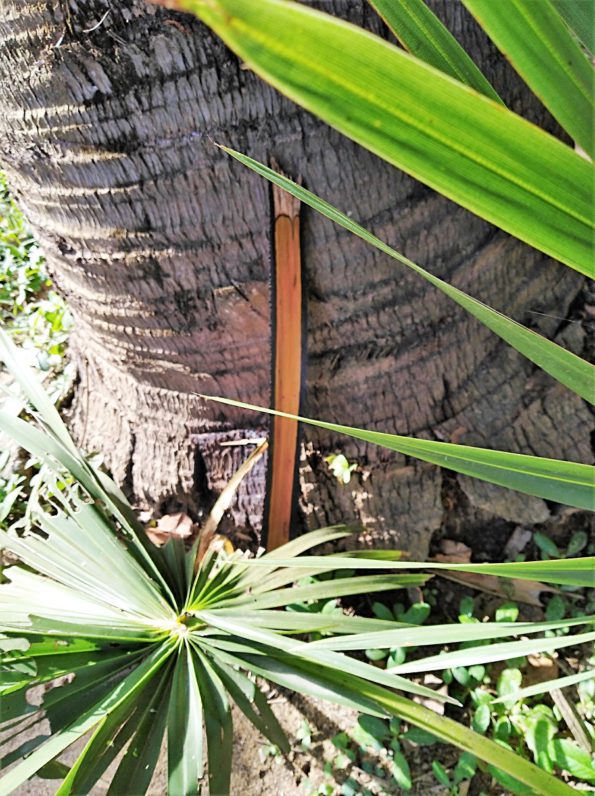 Then this tree covered with bracelets and prayers. It holds the tears of ten thousand mothers as their children’s skulls were smashed against the hard bark.
Then this tree covered with bracelets and prayers. It holds the tears of ten thousand mothers as their children’s skulls were smashed against the hard bark.
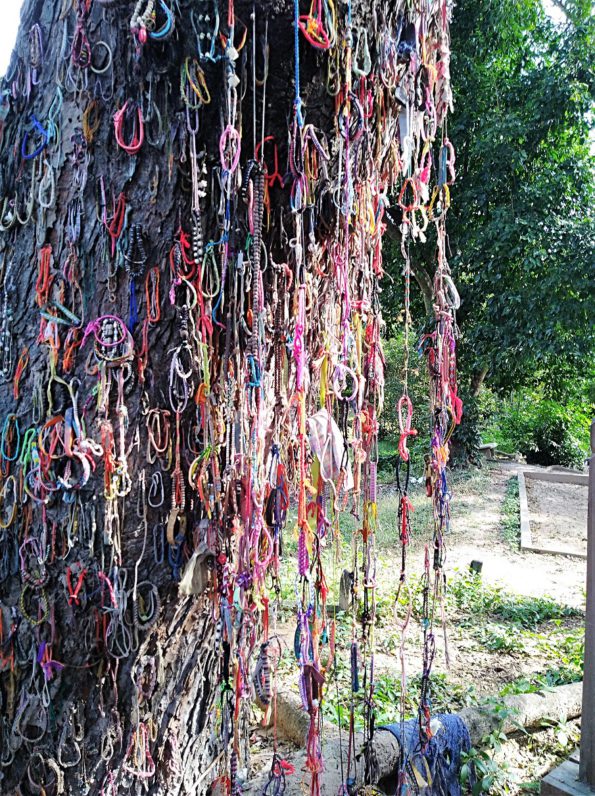 “Better to kill an innocent by mistake than spare an enemy by mistake.” –Pol Pot
“Better to kill an innocent by mistake than spare an enemy by mistake.” –Pol Pot
“To dig of the grass one must remove the roots too.” –Pol Pot
I notice an offering of candies at the tree’s roots. I smile. Then I hear a rogue line from a tour guide:
“We pick up bone fragments every day.”
I think back to picking cherries on my Grandma’s farm, the arrow heads and stone beads we would find under the trees after a good rain. I move on, my foot hitting a soft spot. I don’t want to know why.
I hold my stomach, The wind blows through the trees. I think how could this happen again after it has already been said, “never again“.
I see a shimmering pond full of lily pads like Monet painted. Crickets are heard. Birds chirping. The sounds are peaceful. I sit and pray.
My mind wanders back to my family’s private cemetery hidden among fruit orchards in Southwestern Michigan. On one of the tombstones of a distant cousin who died to young are the words,
“Listen to the Trees”
But not here.
Instead, I listen to the birds and crickets who don’t know the stories or the pain but are just unknowing tourists like me.
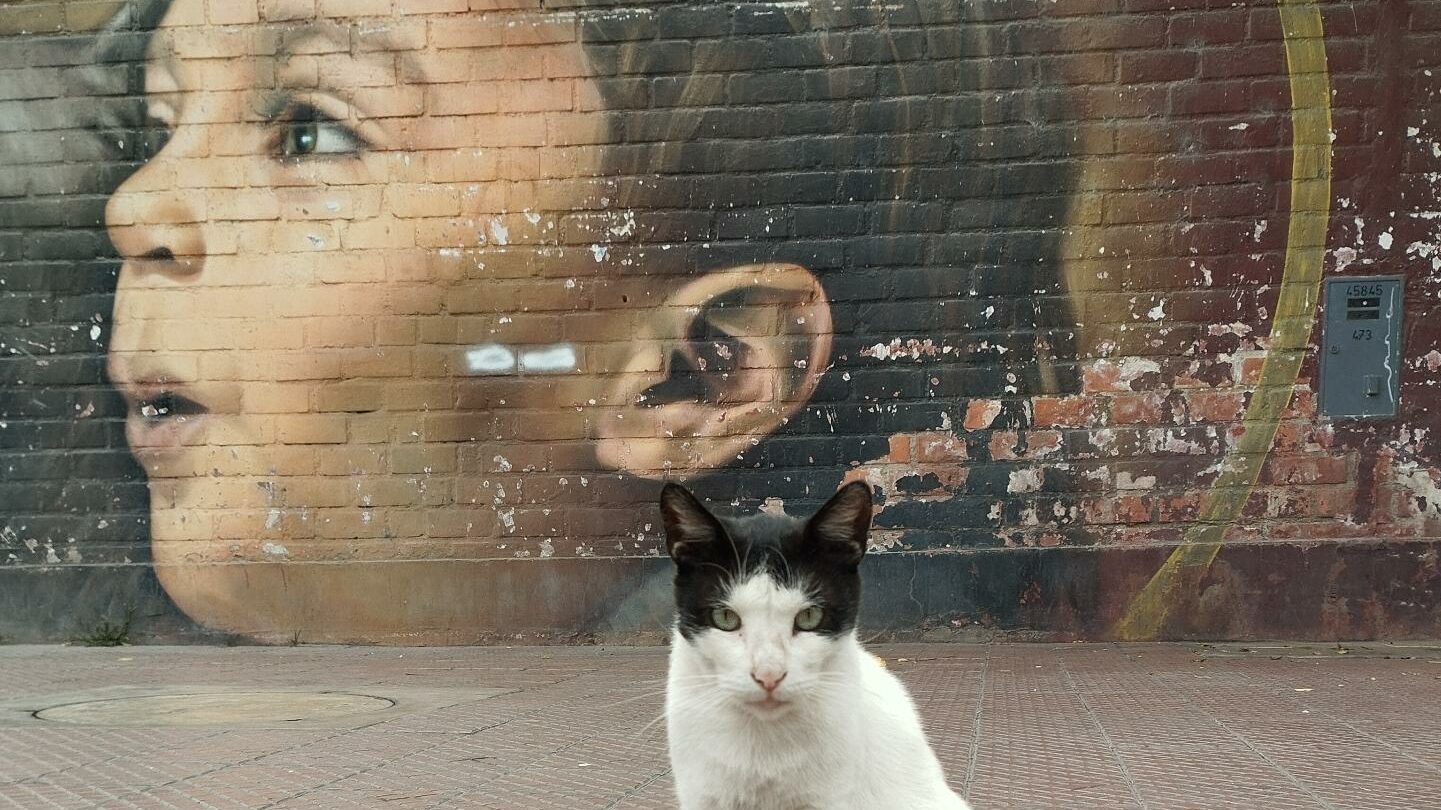
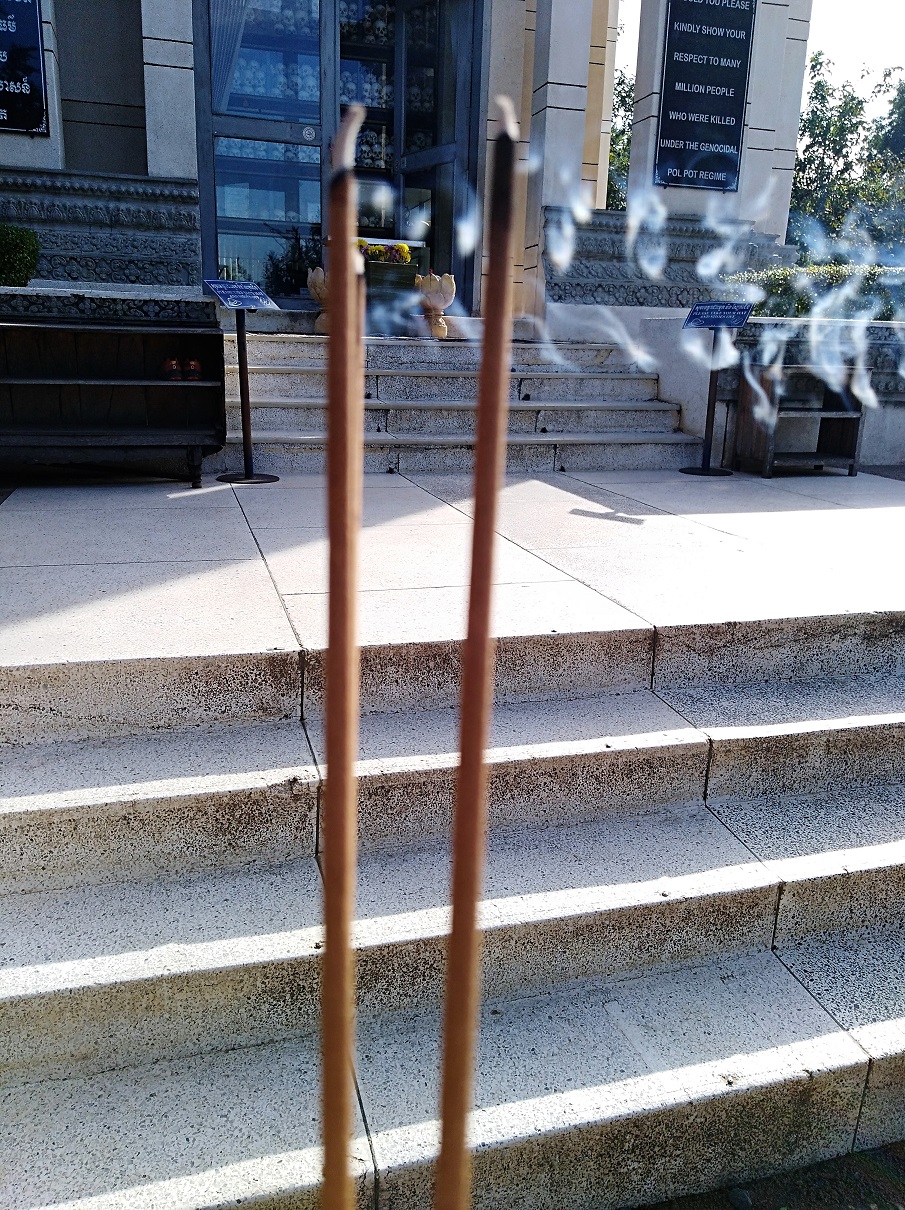
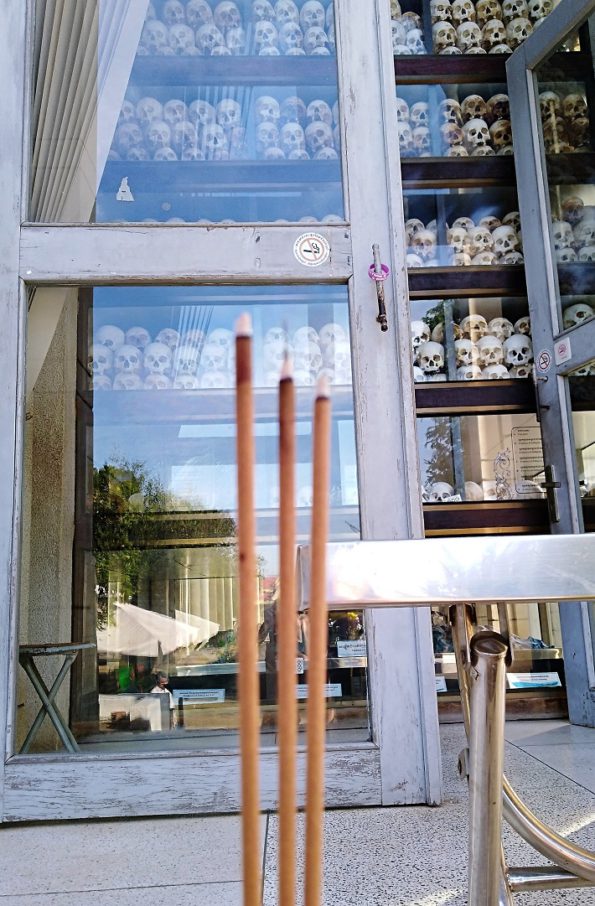
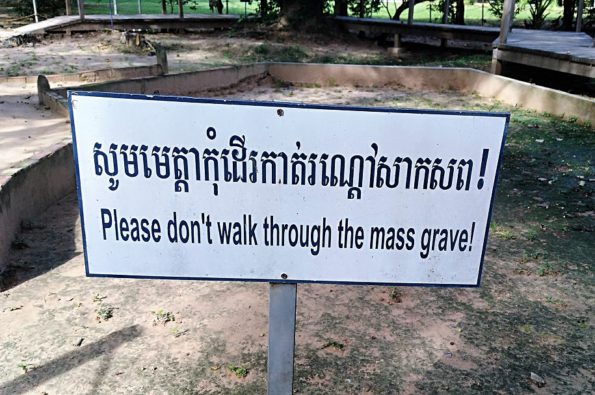
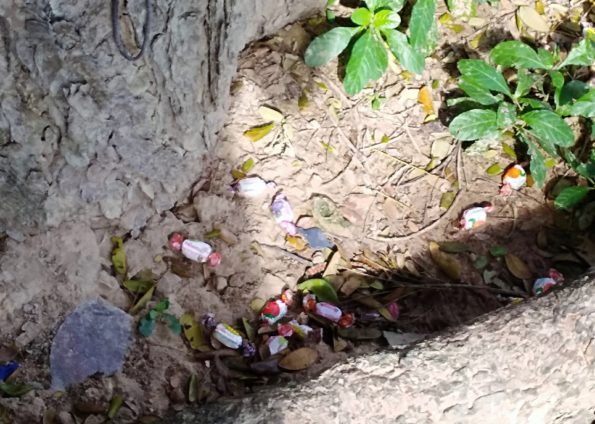
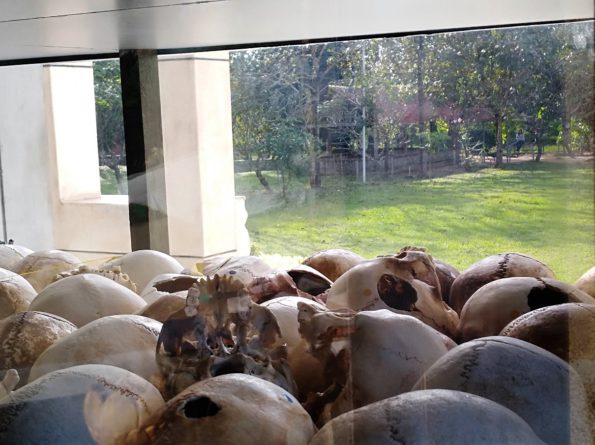
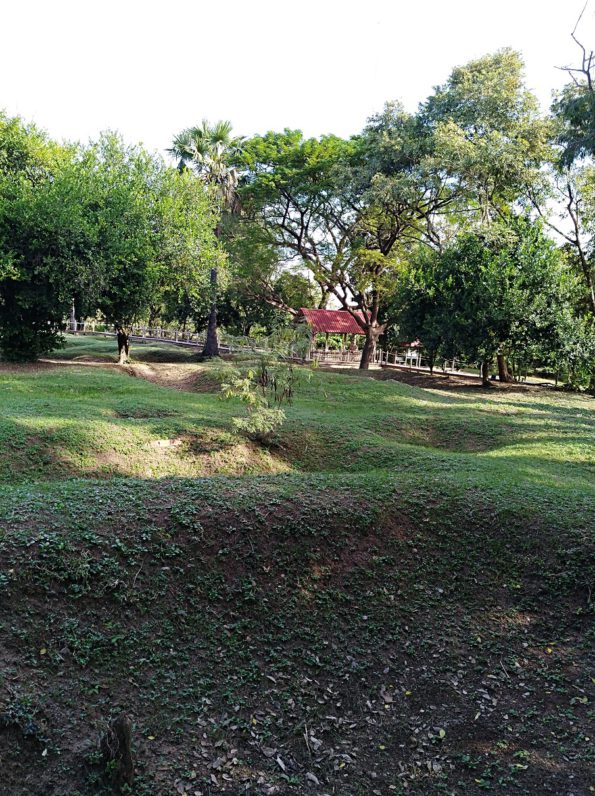
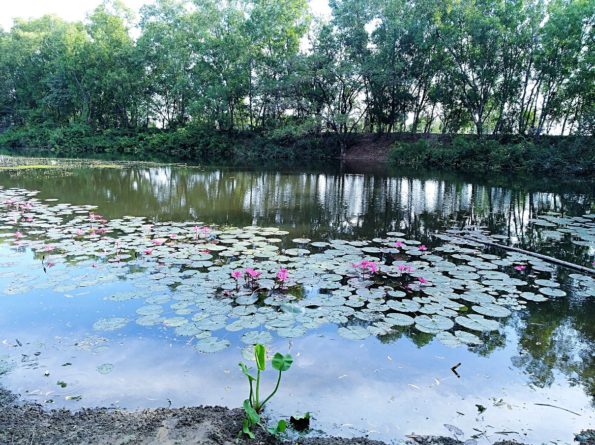
G, I keep coming back to this post, it haunts me with its beautiful and meaningful presentation of inhuman horror.
I have been told that in Spring the gardeners in Lincoln Park (which was Chicago’s graveyard) often find bone fragments — brought toward the surface of earth and memory by the freezing and thawing of the soil.